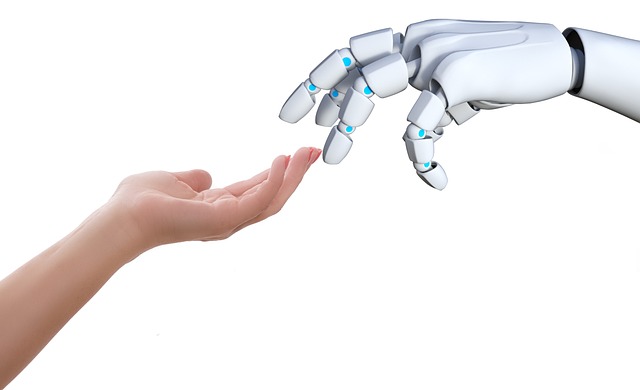Biomimicry in Action: Nature-Inspired Robotics
Lessons from Nature
Roboticists are increasingly turning to the natural world for inspiration. By studying how living organisms move and adapt, engineers are developing machines that can perform tasks traditional robots struggle with.
- Octopus tentacles provide insights into flexible, multi-functional appendages.
- Elephant trunks demonstrate strength combined with precision and dexterity.
- Plant tendrils inspire twisting and curling movements that help in navigating tight or irregular spaces.
Nature’s designs offer blueprints for creating robotic systems that are resilient, adaptable, and capable of performing complex movements with minimal hardware.
The Rise of Soft Grippers
Rigid grippers can harm objects that are soft or fragile. By mimicking biological structures and using soft materials, engineers have developed soft robotic grippers that:
- Safely handle delicate items like fruit, surgical tools, or lab samples.
- Adjust grip pressure and shape based on the object.
- Improve precision when working with irregular surfaces or sensitive materials.
These grippers are especially useful in fields like food handling, healthcare, and biotech.
Navigating Complex Terrain
Nature also informs how robots move through unpredictable environments. Inspired by the locomotion of animals and plants, modern robots are now equipped to traverse unstructured areas such as rubble, forest floors, or underwater regions.
- Flexible bodies and limbs allow for adaptive crawling, slithering, or climbing.
- Advanced sensors integrated into biomimetic systems enhance spatial awareness.
- This approach supports search-and-rescue missions, environmental monitoring, and planetary exploration.
By observing how creatures adapt in dynamic environments, robotics continues to push the boundaries of what machines can achieve beyond factory floors.
For decades, robotics meant rigid joints, hard metal frames, and systems designed for predictable, controlled environments. That worked fine in factories. But as the demand for robots that work alongside humans increases, the old model starts to fall short.
Soft robotics flips the script. Built from flexible materials like silicone and textiles, these machines bend, stretch, and adapt. They’re safer around humans, better at handling delicate tasks, and surprisingly resilient across unpredictable terrains or environments.
Why does this matter now? Because from healthcare to agriculture and even disaster response, the last five years have seen an explosion of real-world use cases. Soft grippers are handling fragile produce. Wearable robots are supporting human movement. And biotech fields are leaning hard into soft-bodied designs for applications inside the body.
This isn’t just a design tweak. It’s a shift in thinking. Softness opens the door to new levels of collaboration between humans and machines—more intuitive, safer, and more capable than ever before.
Soft Robots are Making Factory Floors Smarter and Safer
Safer Collaboration with Humans
Traditional industrial robots often require barriers or distance from human workers. Soft robots, or co-bots, are changing that. Thanks to their compliant materials and sensor-driven responsiveness, they can safely operate in close proximity to people.
- Soft structures reduce the physical risk of injury
- Designed to detect and respond to human interaction instantly
- Improve workplace safety without sacrificing productivity
Increasing Uptime and Operator Trust
By minimizing accidents and downtime, co-bots help keep operations running smoothly. Their reliability and predictability also build greater confidence among human operators.
- Fewer stoppages due to safety incidents
- Machines that adapt to the pace of human workers
- Co-bots as assistants rather than replacements
Flexible Automation in Key Industries
Soft robotics are becoming especially valuable in sectors where precision, delicacy, and adaptability matter. Industries like food processing or packaging are adopting soft robots to handle tasks that were once too complex or variable for traditional automation.
Key use cases include:
- Packaging irregularly shaped or fragile items
- Streamlining food handling processes where hygiene and touch sensitivity are critical
- Assembling components with delicate tolerances
Related Resource
For a deeper look at where industrial robotics is heading, read: The State of Industrial Robotics in 2024: What’s New
Soft robotics is no longer just a lab oddity—it’s now reshaping healthcare. Think prosthetic limbs that flex like real muscles or exosuits that help stroke patients walk again. These devices are built from soft, flexible materials that move with the body, not against it. More hospitals and clinics are opting for this kind of tech because it reduces strain and speeds recovery.
Minimally invasive surgical tools are also getting a soft robotics upgrade. Using small, pliable actuators, surgeons can operate with more precision and less damage to surrounding tissue. This means shorter hospital stays, fewer complications, and a smoother road back to normal.
Then there are smart materials—fabrics and gels that adapt in real time to a patient’s movements or temperature. These aren’t just high-tech gimmicks. They’re critical to building systems that respond to the body instead of fighting it. It’s part of a bigger shift: healthcare tech is finally being designed with the patient at the center, not just the procedure.
The goal is clear: tools that heal without harming, devices that fit rather than force. Soft robotics is making that possible, moving care from rigid to responsive.
Soft robotics is evolving—fast. Materials like silicone, hydrogels, and self-healing polymers are at the core of this shift. They’re flexible, resilient, and capable of mimicking the tactile nuance of muscle and skin. These aren’t the rigid robots of yesterday—they bend, recover, and adapt in real-time.
Actuation is also getting gentler and smarter. Instead of loud motors and clunky gears, researchers are using air and fluid dynamics to power movement. The result is equipment capable of gentle strength—ideal for things like delicate manufacturing, medical assistance, or exploring fragile ecosystems.
Then you’ve got shape-memory alloys and electroactive polymers—two game-changers in pure versatility. These materials respond to temperature or electricity, letting robots shift between shapes and functions on the fly. It’s not sci-fi anymore. This is practical, next-wave tech giving soft robots the ability to do more with less.
Engineers are building machines that don’t just move through the world—they adapt to it.
Soft robotics isn’t just a lab curiosity anymore. It’s evolving fast thanks to better materials and sharper tech. Flexible sensors are a big part of this leap. Mounted directly into soft robot skins, they provide real-time feedback on pressure, movement, and terrain shifts. The robot doesn’t just move anymore — it senses.
AI is filling in the rest. Machine learning models are helping these robots interpret what the sensors pick up. That means soft robots can now “feel” their way through tight spaces, adapt to slippery or rough ground, and make decisions on the fly. It’s not human intuition, but it’s getting closer.
These upgrades are scaling into real-world roles. Exploration missions, search and rescue in disaster zones, even precision farming — all are beginning to lean on soft robots that combine agility with adaptability. The beauty of it? They move where rigid machines can’t, and they learn as they go.
Soft robotics is breaking ground in labs and on polished showroom floors, but the technology still has some tough terrain to cover. One of the biggest challenges? Durability. Most soft devices still struggle in anything beyond tightly controlled environments. Rain, heat, dust, and rough handling can degrade sensors or tear materials, leaving real-world deployment limited.
Power is another sticking point. Flexible, low-energy systems sound great until you need them to run for hours without a bulky battery. Energy-efficient actuation remains a bottleneck. Mobile soft robots, especially those meant for disaster response or remote caregiving, are stuck plugging into the wall or carrying too much weight.
Then there’s regulation. Home care bots and soft medical devices operate in spaces filled with legal and ethical landmines. Privacy, safety, and data control aren’t just concerns — they’re deal breakers. Until we see clearer frameworks, adoption in sensitive sectors will stay slow.
The path forward? Smarter materials, streamlined energy systems, and better testing in unpredictable environments. Scaling will take time. But for soft robotics to move from prototype shelves into everyday life, the tech needs to get tougher, safer, and, ultimately, more self-sufficient.
Soft robotics isn’t about metal arms crunching gears anymore. It’s about pliable machines built to adapt, assist, and integrate with humans in ways that feel intuitive. The tech is flexible by design — think grippers that hold delicate fruit without bruising it or wearable suits that support human movement without getting in the way. It’s no longer theory, it’s deployment.
In surgery, soft robotic tools help navigate the human body with more precision and less damage. In warehouses, they’re lifting, sorting, and handling unpredictable objects every day. And in human rehab, soft exosuits are helping people walk again without putting the body under stress. This isn’t tomorrow’s blueprint. It’s already built, tested, and scaling up.
The bottom line — soft robotics is shifting how we work with machines. Instead of replacing us, they’re learning to move with us.


 Mikeric Edwardsons is a technology writer at gfxrobotection, specializing in cybersecurity trends, software solutions, and modern tech innovations. His content simplifies complex topics to deliver real value for both beginners and tech professionals.
Mikeric Edwardsons is a technology writer at gfxrobotection, specializing in cybersecurity trends, software solutions, and modern tech innovations. His content simplifies complex topics to deliver real value for both beginners and tech professionals.

